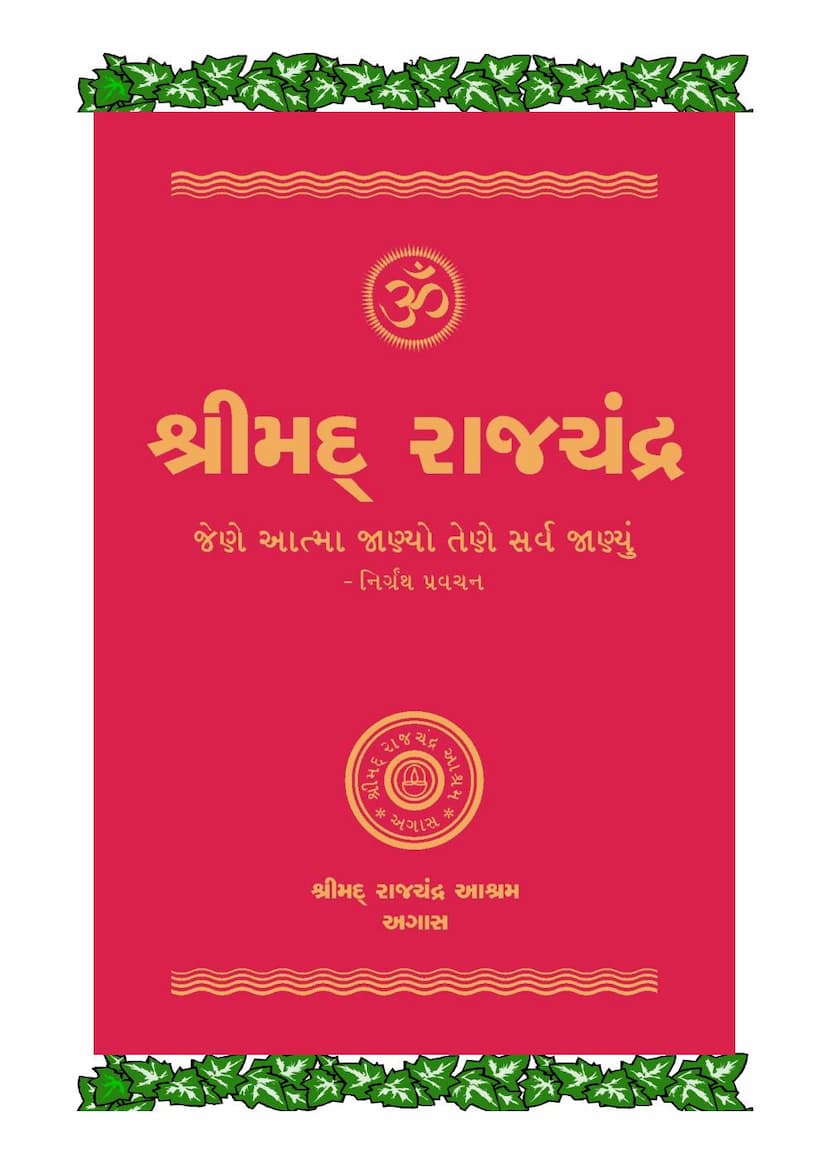Shrimad Rajchandra Vachanamrut
Added to library: September 2, 2025

Summary
Based on the provided Gujarati text and its English title, "Shrimad Rajchandra Vachanamrut," the book is a collection of spiritual discourses and teachings by Shrimad Rajchandra. The text provided is a detailed table of contents and excerpts from various letters and writings attributed to him. Here's a comprehensive summary of the key themes and teachings presented in the text:
Overall Purpose and Theme:
The central theme of "Shrimad Rajchandra Vachanamrut" revolves around the path to self-realization and liberation (Moksha) according to Jain philosophy, as interpreted and taught by Shrimad Rajchandra. The text emphasizes the importance of understanding the true nature of the soul, detachment from worldly possessions and relationships, and the cultivation of inner virtues to achieve spiritual liberation.
Key Teachings and Concepts:
- The Soul (Atma) as the True Self: The text consistently highlights the soul as the eternal, unchanging, and pure essence of an individual. The ultimate goal is to realize this true nature, which is described as being beyond worldly experiences, pure consciousness, and bliss.
- Detachment (Vairagya) and Non-attachment (Asangata): A core teaching is the necessity of detachment from worldly things, relationships, and even the body. This detachment is not about renouncing the world externally but cultivating an inner state of non-attachment, recognizing that all worldly possessions and experiences are impermanent and ultimately a source of suffering.
- The Role of the Guru and Satsang: The text repeatedly stresses the indispensable role of a true Guru (Sadguru) and Satsang (congregation of the wise) in spiritual progress. A Guru guides the seeker on the path to self-realization, and Satsang provides a supportive environment for spiritual growth.
- Understanding Reality (Tattva): The importance of discerning the true nature of reality is emphasized. This involves understanding the difference between the soul (Atma) and the non-soul (pudgala), and recognizing the soul's inherent purity and eternal nature, free from worldly modifications.
- The Path of Right Faith, Knowledge, and Conduct (Samyak Darshan, Gyan, Charitra): These are presented as the essential pillars of the spiritual path. Right faith in the teachings of the Tirthankaras, right knowledge of the true nature of the soul, and right conduct are crucial for liberation.
- Control of the Mind and Senses: The text highlights the power of the mind and the senses, which are often the root cause of suffering and bondage. Cultivating control over them through practices like meditation and detachment is essential.
- The Impermanence of the World: The teachings frequently remind the reader of the transient nature of worldly pleasures, relationships, wealth, and even the body itself. This understanding is meant to foster detachment and direct the focus towards the eternal soul.
- Ethical Living and Virtues: Virtues like truthfulness, non-violence (Ahimsa), forgiveness, contentment, humility, and self-discipline are emphasized as foundational for spiritual progress.
- The Importance of Right Conduct and Intention: The text suggests that external rituals are less important than inner purity and right intention. True spiritual practice stems from a sincere and pure heart.
- The Path to Moksha: The ultimate aim is Moksha (liberation), which is described as the state of eternal bliss, free from the cycle of birth and death, achieved by realizing the true nature of the soul and eradicating karmic obscurations.
Specific Concepts Mentioned:
- Tattvas: The text refers to the concept of Tattvas (fundamental realities) in Jainism, particularly the nine Tattvas (Jiva, Ajiva, Punya, Papa, Asrava, Samvara, Nirjara, Bandha, Moksha), which are crucial for understanding the nature of existence and the path to liberation.
- Ahimsa: Non-violence is presented as a paramount principle, extending to all living beings, including microscopic ones.
- Brahmaacharya: The importance of celibacy and control over sensual desires is stressed.
- Vairagya: Detachment and renunciation are repeatedly emphasized as key to spiritual progress.
- Dharma: Righteousness, spiritual duty, and the path of liberation are central themes.
- Dhyana (Meditation): The text discusses different types of meditation, particularly Dharma Dhyana (meditation on virtues and righteous principles) and Shukla Dhyana (pure meditation), as crucial for spiritual advancement.
- Nirvana: This is presented as the ultimate goal, a state of liberation from all suffering and bondage.
- Samyak Darshan, Gyan, Charitra: The path to Moksha is consistently linked to these three jewels of Jainism.
Structure and Content:
The provided text, particularly the detailed index and the initial pages, reveals a comprehensive collection that includes:
- Prayers and Invocation: Beginning with prayers to deities like Shri Jin and Lord Rishabhdev.
- Spiritual Discourses: Numerous teachings covering various aspects of spiritual life, ethics, and philosophy.
- Illustrative Stories and Examples: The text uses stories like those of King Nimi and the snake charmer, King Bharat, King Shrenik and Anath Muni, and Kapil Muni to illustrate spiritual concepts.
- Moral Precepts and Instructions: The text provides practical advice on how to live a virtuous and spiritually beneficial life through daily conduct.
- Analysis of Jain Philosophy: It delves into concepts like the soul, karma, liberation, and the nature of reality from a Jain perspective, often contrasting it with other philosophies.
- Compilation of Writings: The text appears to be a compilation of Shrimad Rajchandra's letters, poems, discourses, and philosophical treatises.
Key Takeaway:
Shrimad Rajchandra Vachanamrut, as presented, is a profound guide for spiritual seekers, offering practical wisdom and deep philosophical insights rooted in Jainism. It encourages introspection, ethical living, and unwavering devotion to the path of self-realization as the means to overcome suffering and attain ultimate liberation. The emphasis is on inner transformation and the direct experience of the soul's true nature, guided by the wisdom of enlightened beings.